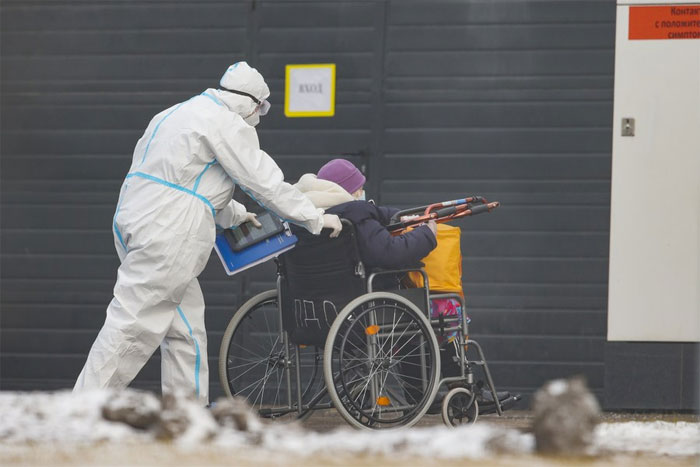Supermolecular drugs - New hope for paralyzed patients
US scientists have developed a new drug capable of promoting cell regeneration, reversing paralysis in mice with spinal injuries.
The study was carried out by a team of scientists from Northwestern University and was published in the journal Science on November 11. Scientists hope the US Food and Drug Administration can allow clinical trials of this treatment drug as early as 2022.
In the study, the team of scientists used nanofibers to mimic the structure of the extracellular matrix , which is a network of molecules that surrounds tissue with the job of supporting cells.

The development of a new drug offers hope for paralyzed patients to be able to walk. (Artwork: THX/VNA)
Each nanofiber is about 10,000 times thinner than a human hair, and they're made up of hundreds of thousands of bioactive molecules called peptides, which transmit signals to promote nerve regeneration. .
The scientists made an incision along the spines of lab rats, then injected a generous amount of gel into the tissue surrounding the spinal cords. All these procedures are done within 24 hours. Four weeks later, the mice treated with the therapy were able to walk almost before the spinal cord injury.
Continuing to monitor the effects of the therapy on cells, the scientists discovered significant improvements in the spinal cords.
Lead researcher Samuel Stupp said the gel the team developed could open up a new generation of drugs called "supramolecular drugs" because the therapy involves a combination of molecules, not one. Single.
According to the team, the therapy is quite safe because the materials used biodegrade within a few weeks and become nutrients for the cells.
According to the scientists, the new therapy also helps to reconnect nerve cells, or axons , to reduce scar tissue, which is considered a barrier to the regeneration process. In addition, an insulating layer on the outside of the axon called myelin, which is important in speeding up electrical communication between neurons, was also regenerated, while blood vessels were formed. Fort.
One of the team's key findings was the induction of a certain mutation in the molecules, thereby promoting the motility of these molecules. According to Mr. Stupp, the receptors in neurons are always in motion, and enhancing the movement of therapeutic molecules in the nanofibers will help connect these fibers more efficiently, allowing people to move more efficiently. disease can return to motion.
In fact, the researchers tested two versions of the treatment — one with the mutation and one without — and found that the mice that received the mutant version recovered much of their function. than.
According to official statistics, in the US alone, nearly 300,000 people live with a spinal cord injury. The life expectancy of these people is shorter than that of healthy people.
- Patients with paralysis can move with 'remote control'
- Restore legs for paralyzed people
- The old man invented the exclusive vehicle for the paralyzed
- Use the brain to manipulate the prosthesis
- New breakthrough in recovering paralyzed heart muscle after a heart attack
- Brain control device helps stroke patients move their limbs
- The robot understands the thoughts of the paralyzed
- New hope for people paralyzed by spinal injuries
- Combining HIV and flu drugs to combat corona virus
- Alternative chemotherapy in curing cancer
- Hope for leukemia patients
- Japanese medicine has a positive effect on Ebola treatment
 13 causes of non-itchy rash
13 causes of non-itchy rash How the mouse with human ears changed the world?
How the mouse with human ears changed the world? The truth about 'fried rice syndrome!
The truth about 'fried rice syndrome! What is dental implant?
What is dental implant?